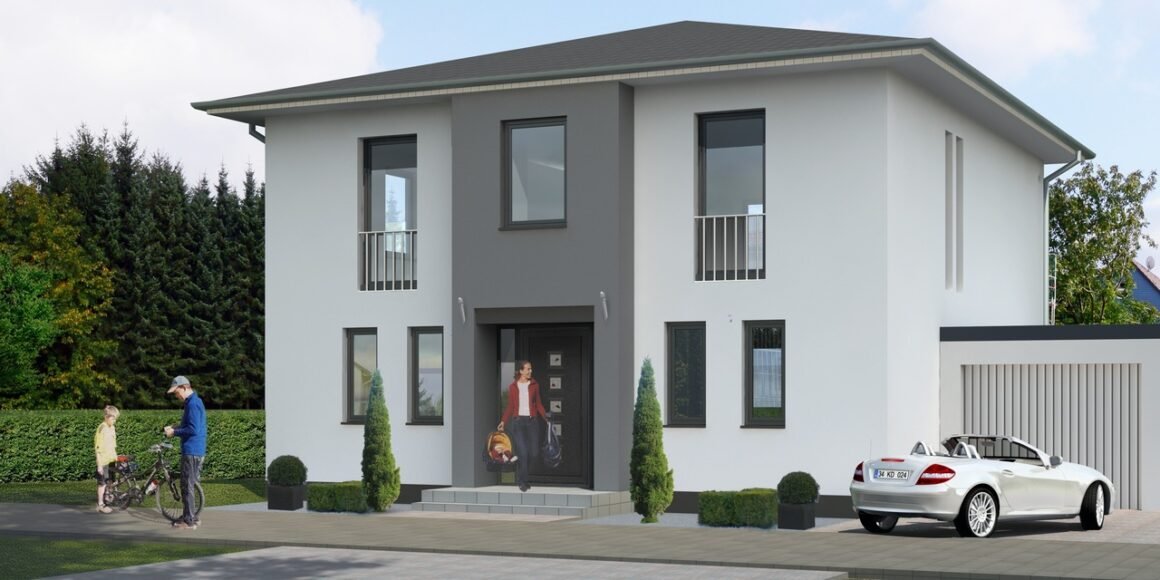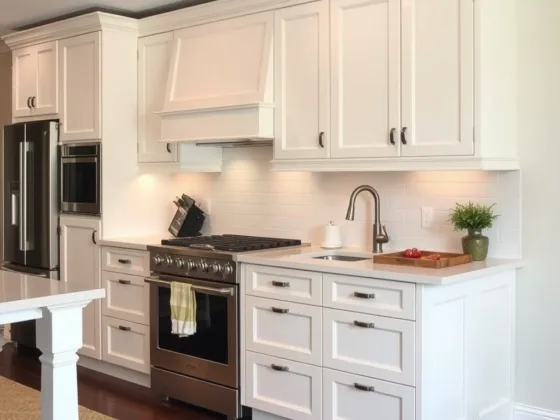Table of Contents Show
Choosing a render that best suits your house’s needs might seem a little complicated or overwhelming at first, but once you know the different options and how they affect your home, it will be a much easier decision!

Four of the main types of renders include cement, acrylic, lime, and polymer.
All of these have their pros and cons, but depending on the weather conditions you encounter, the style you want, and your budget, is what will determine the type of render that is right for you. Once you’ve found the one that best adapts to your needs, the interior design rendering process will get easier, and it will show great results.
1. Cement
Cement rendering is one of the most popular options, and it’s created by mixing together cement, sand, water, and either lime or clay.
Cement provides a more smooth and pleasing finish on a rough surface, such as brick, concrete, or stone blocks. It can even be applied to painted walls as long as the walls have been properly prepared!
There are several pros to cement rendering:
- One of the most durable renders.
- Provides additional support to your building.
- Most cost-effective option.
- Easy to apply.
- Can be made in a variety of colors.
- Can be made in a variety of textures depending on how smooth or rough you want to render to look.
- Protects the property from weather and sun damage.
There are also several cons to cement rendering:
- While it’s cheaper when it comes to materials, the labor cost can be more expensive because it can take several coats.
- If the underlying structure moves for any reason, the cement render can crack.
- If you want the render to continue to look good, it might require regular repainting.
- It’s not recommended for older homes because it can crack easily.
If you are on a tight budget, cement rendering might be best for you because it’s the most cost-effective option!
2. Acrylic
Acrylic rendering is very similar to cement rendering. The difference is that acrylic is added to the mixture. Acrylic is a type of plastic that makes the render more flexible.
This type of render is suited for both internal and external projects. If you’re looking for a more textured render, acrylic contains aggregates, a material used to create a texture, in the mixture.
It is also used to help seal the surface of the render and can even hide defects on the surface. So, if there are any cracks on the surface, acrylic render is a good choice!
Here are some more pros to acrylic rendering:
- Offered in a variety of colors and textures.
- It’s more flexible than cement rendering, so it’s less likely to crack and it’s more durable.
- It’s a long-lasting render and provides protection against UV rays and water damage.
- It has a fast application process and dries very quickly.
- Better suited for more surfaces than cement render.
- Fibers are added to the mixture to prevent future cracking.
There are not many cons to acrylic rendering, besides it being more expensive than cement rendering. This is a favorite of many because it’s so similar to cement rendering, but offers more benefits and is long-lasting!
Read Also:
3. Lime
Lime rendering is a more traditional method for house rendering, however, it’s recently been re-emerging. This is a great option for rendering if you’re looking for a more breathable house rendering system.
It’s the most breathable because it can expand and contract with the surface of the building! For this reason, lime render is the best choice if you have a wooden home, or the building is older than most.
Some pros to lime rendering:
- More flexible than cement.
- Looks very attractive.
- Enhances the exterior of older homes.
- Comes in many different formats to choose from.
- There are a few cons to lime rendering:
- More expensive than standard cement renders.
- It requires regular coating with lime wash.
If you’re someone who lives in an older, period home and you want to make sure your house continues to thrive in its old age, lime render is a wonderful option.
The breathability of lime rendering makes it so if your older home moves, the render moves with it! You don’t want your render to crack, especially on an older home!
4. Polymer
Polymer rendering is relatively new. While it’s not normally the first option people go for, it still has great benefits!
A polymer is a cement rendering application, in which the polymer is added to the product to make it very adhesive. This rendering is usually recommended if cement or acrylic rendering won’t be as effective for you.
If you’re looking to render your bathroom or laundry room, this is a great render to choose from because it’s waterproof, and no additional waterproofing is necessary! The polymer is usually sold pre-mixed in bags with either cement or lime as a base.
Here are some more pros to polymer rendering:
- Waterproof.
- Weather-resistant, so it’s highly suitable for external walls.
- Can be used on most brick and wooden homes.
While it’s not most people’s first choice of render, the waterproof and weather-resistant aspects of it are a very important thing to consider.
If you live in an area with heavy winds or rain, polymer rendering on your home will offer you peace of mind knowing that your house will be protected.
Rendering your walls is one of the best decisions you can make for the future of your home. Not only does it look appealing to the eye, but it offers protection for years to come.
Cement rendering, while one of the most popular options, might not be the best option for you depending on where you live. However, if you’re on a budget, it’s a good choice!
Acrylic rendering has little to no drawbacks. While it’s a little more expensive than cement, it offers long-lasting protection.
Lime rendering is a great option for older homes that offers a much more breathable house rendering system. However, it is more expensive and requires regular upkeep.
Lastly, polymer rendering is the best option for you if you deal with a lot of rain or harsh weather because of its waterproofing properties.
Bottom Line
All four of these rendering styles have their own benefits. Depending on the environment around you and what you’re looking for in a render will determine which style is best for you!










